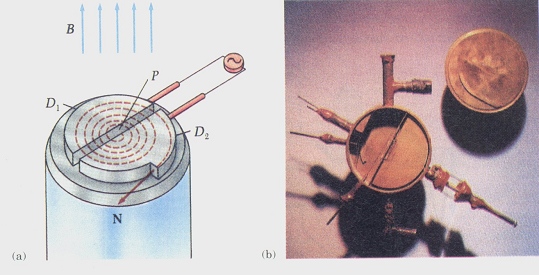
The first linear accelerator built by Cockroft and Walton (1932) was few meters in length and was accelerating protons up to 700 keV energy. To get the high voltage needed they projected a simple electronic device with diodes and capacitors.
At the same time (1935) Van der Graaf has patented his device, constructed on the principle of "Faraday's cup"ó - modern accelerators of this type accelerate particles up to 20 MeV energy.
The first cyclotrone was built in Berkeley (1934) by E.O. Lawrence and M.S. Livingston.

Particles (for
example H+ ions, i.e. protons) are accelerated by the difference
of potential between two parts of the cup: the polarity of the cups changes
with a well-defined frequency, just at the moment of arrival of ions. All
the device is placed in a perpendicular magnetic field. The maximal kinetic
energy of ions depends on the magnitude of this field and on the radius R
of the cups:
Cyclotrons
usually work on up to 20 MeV energy, before effects of the relativistic "mass increase" are to be taken into
account.